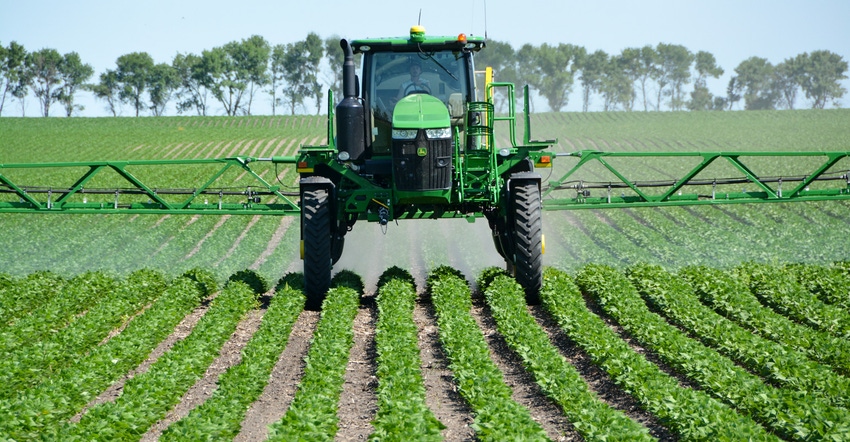May 8, 2020

An eight-step sprayer cleanout procedure can help you reduce of the risk of sprayer contamination that could cause crop damage, says Gared Shaffer, South Dakota State University Extension weeds field specialist.
1. Empty tank. Make sure spray tank is empty before leaving the field or dispose of spray solution according to label.
2. Select cleaning area. Always clean the sprayer in an area that will ensure no contamination of water supplies, streams, crops or other sensitive areas and away from contact with humans, pets and livestock.
3. Rinse sprayer. Rinse equipment thoroughly removing any visible product adhering inside of tank. Fill the tank 10% with water and the first specific tank cleaning solution that is recommended for the herbicide. Agitate for 15 minutes. Most common tank cleaning solutions include water, commercial tank cleaner, ammonia, bleach, detergents, petroleum products (diesel or kerosene) or non-ionic surfactant.
4. Flush and drain. Flush first rinse through hoses, boom and nozzles for 15 minutes, then drain.
5. Disassemble and clean. After flushing the system, disassemble, clean and flush all strainers, filters, nozzles, nozzle screens, diaphragms and boom ends where residue can accumulate. Reassemble sprayer parts.
6. Soak tank. Fill the tank 10% with water and the second tank cleaning solution that is recommended for the herbicide. Agitate as directed. Charge booms. Let it sit preferably overnight before flushing again.
7. Rinse and repeat. Continue using the listed recommended rinses from herbicide and commercial cleaner labels by filling, agitating and flushing the system with the suggested solution each time. It could be necessary to rinse the tank three more times for some herbicide products.
8. Clean the exterior. Thoroughly clean the outside of equipment including tanks, booms, nozzles and tires.
Follow procedures specified on the herbicide and commercial cleaner labels and in the sprayer operator’s manual to completely remove herbicide residue, Shaffer advises.
Source: SDSU, which is solely responsible for the information provided and is wholly owned by the source. Informa Business Media and all its subsidiaries are not responsible for any of the content contained in this information asset.
You May Also Like




